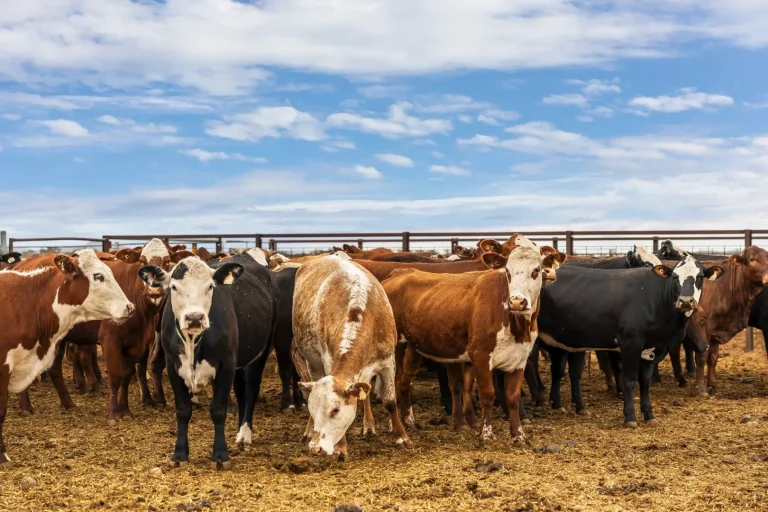Strategic Guide to Understanding Zoning Regulations in Livestock Farming Investments
Livestock farming investments represent substantial financial commitments that require careful regulatory planning before property acquisition or operational expansion. Understanding zoning regulations in livestock farming investments becomes essential when evaluating cattle stations, sheep properties, pig operations, or mixed livestock enterprises. At Agribusiness Horizons, we regularly guide clients through complex zoning requirements that can significantly impact investment feasibility and operational success. Zoning violations can result in costly operational shutdowns, legal challenges, and substantial financial losses that could have been avoided through proper due diligence. Contact our agricultural regulatory specialists to ensure your livestock investment complies with all applicable zoning requirements from the outset.
This comprehensive guide examines the key zoning considerations that affect livestock farming investments, from initial property evaluation through operational compliance. You’ll learn about different zoning classifications, permit requirements, and regulatory processes that impact livestock operations. We’ll also address common compliance challenges and provide practical strategies for navigating complex regulatory frameworks that govern agricultural land use.
Background and Regulatory Framework Evolution
Agricultural zoning regulations have become increasingly sophisticated as rural communities balance farming operations with environmental protection, public health concerns, and residential development pressures. Traditional farming areas that once operated with minimal regulatory oversight now face comprehensive zoning codes that specify permitted uses, operational restrictions, and development standards for livestock facilities.
The regulatory landscape varies significantly between jurisdictions, creating challenges for investors considering properties across multiple regions. Some areas maintain agriculture-friendly zoning that accommodates large-scale livestock operations with minimal restrictions. Others impose strict limitations on animal numbers, facility setbacks, waste management systems, and operational practices that can substantially impact investment viability.
Environmental considerations increasingly influence livestock zoning regulations. Water quality protection, air quality standards, and wildlife habitat preservation requirements affect where and how livestock operations can be established. Modern zoning codes often incorporate performance standards that focus on environmental impacts rather than simply restricting livestock numbers or facility types.
The evolution toward more complex regulatory frameworks reflects growing awareness of agriculture’s interactions with surrounding communities and natural resources. Successful livestock investors must understand these regulatory trends and anticipate future changes that could affect their operations. Professional guidance becomes particularly valuable when navigating jurisdictions with complex or frequently changing zoning requirements.
Zoning Classifications and Livestock Operation Compatibility
Zoning compliance for livestock operations begins with understanding how different zoning classifications accommodate agricultural activities. Agricultural zoning typically provides the most flexibility for livestock farming, allowing various animal types, processing facilities, and support structures with minimal restrictions. However, even agricultural zones may impose limitations on certain activities or require special permits for intensive operations.
Rural residential zoning presents more complex considerations for livestock investments. These areas often permit small-scale livestock keeping while restricting commercial operations that could conflict with residential use. Investors must carefully review specific zoning provisions to determine whether proposed livestock activities align with permitted uses and development standards.
Commercial and industrial zoning may accommodate certain livestock-related activities such as feed processing, veterinary services, or livestock transportation facilities. However, actual animal husbandry typically requires agricultural zoning or special use permits that allow farming activities in non-agricultural zones. Agricultural zoning laws for livestock investments vary widely in their treatment of these mixed-use situations.
Special overlay districts can impose additional restrictions on livestock operations regardless of underlying zoning classifications. Environmental overlay zones may limit livestock numbers near water bodies or sensitive habitats. Historic preservation overlays could restrict facility modifications or new construction. Airport overlay zones might prohibit certain livestock types that could create aviation hazards.
Understanding zoning compatibility requires thorough analysis of all applicable regulations, not just primary zoning classifications. Professional review helps identify potential conflicts and compliance requirements that could affect investment decisions or operational planning.
Permit Requirements and Approval Processes
Livestock farming zoning requirements often involve multiple permit types and approval processes that must be completed before operations can begin. Building permits cover construction of barns, fencing, waste management facilities, and other infrastructure required for livestock operations. These permits ensure compliance with building codes, setback requirements, and safety standards.
Special use permits may be required for intensive livestock operations, processing facilities, or activities that exceed standard agricultural uses. The approval process typically involves public hearings, neighbor notification, and detailed operational plans that demonstrate compliance with zoning standards. Appeal processes can extend approval timelines and create uncertainty for investment planning.
Environmental permits address water use, waste discharge, air quality impacts, and other environmental considerations. Concentrated animal feeding operations often require comprehensive environmental assessments and ongoing monitoring programs. These requirements can significantly impact operational costs and regulatory compliance responsibilities.
Regulatory guidelines for livestock property investments emphasize the importance of obtaining all required permits before beginning operations. Operating without proper permits can result in enforcement actions, fines, and orders to cease operations until compliance is achieved. The costs and delays associated with permit violations often exceed the expense of proper initial compliance.
Successful permit applications require detailed operational plans, site engineering, and environmental assessments that demonstrate regulatory compliance. Professional assistance with permit preparation can improve approval prospects and reduce processing delays that could impact investment timelines.
Site-Specific Compliance Factors
Zoning considerations in livestock agriculture extend beyond general zoning classifications to address site-specific factors that affect regulatory compliance. Setback requirements specify minimum distances between livestock facilities and property lines, residences, wells, and water bodies. These requirements vary by livestock type, facility size, and local regulations.
Water resource protection represents a critical compliance factor for livestock investments. Operations near wells, streams, wetlands, or other water features may face restrictions on animal numbers, waste management practices, and facility locations. Ground water protection requirements can limit fertilizer application, manure storage, and facility drainage systems.
Soil conditions affect both operational suitability and regulatory compliance. Areas with shallow bedrock, high water tables, or poor drainage may face restrictions on waste storage facilities or require enhanced environmental protection measures. Soil testing often becomes necessary to demonstrate compliance with environmental protection requirements.
Access and transportation considerations impact both zoning compliance and operational efficiency. Adequate road access for feed delivery, livestock transportation, and emergency services may be required for permit approval. Some jurisdictions restrict heavy truck traffic on certain roads or during specific hours, affecting operational planning.
Neighbor relations and community acceptance can influence regulatory approval processes and ongoing compliance. Operations in areas transitioning from agricultural to residential use may face increased scrutiny and stricter compliance requirements. Proactive community engagement often helps address concerns and facilitate regulatory approval.
Zoning Compliance Comparison Table
| Compliance Area | Agricultural Zoning | Rural Residential | Commercial/Industrial | Special Use Permits |
|---|---|---|---|---|
| Livestock Types | Most types permitted | Limited to small-scale | Restricted to support services | Case-by-case evaluation |
| Animal Numbers | Generally unrestricted | Specific limits imposed | Not typically permitted | Subject to approval conditions |
| Processing Facilities | Usually permitted | Often prohibited | May be permitted | Requires detailed review |
| Setback Requirements | Minimal restrictions | Moderate to strict | Varies by use type | Determined during approval |
| Environmental Review | Basic requirements | Moderate oversight | Comprehensive review | Extensive assessment required |
This comparison illustrates how different zoning classifications affect understanding zoning regulations in livestock farming investments and the varying levels of regulatory complexity investors may encounter.
Agribusiness Horizons’ Regulatory Navigation Services
At Agribusiness Horizons, our expertise in livestock operation permits and agricultural regulatory compliance helps clients successfully navigate complex zoning requirements throughout their investment process. Our team combines deep knowledge of agricultural operations with extensive experience in regulatory compliance, ensuring that livestock investments proceed smoothly from initial evaluation through operational startup.
Our regulatory analysis begins during the property evaluation phase, identifying zoning classifications, permit requirements, and potential compliance challenges before clients commit to property acquisitions. We review local zoning codes, environmental regulations, and development standards to assess regulatory feasibility and identify any restrictions that could impact planned operations.
We maintain extensive relationships with regulatory agencies, planning departments, and environmental consultants across our service regions. These professional networks enable us to provide current information about regulatory changes, processing timelines, and agency preferences that can significantly impact permit approval prospects and compliance costs.
Our comprehensive due diligence process includes regulatory compliance assessments that identify existing violations, pending enforcement actions, or compliance issues that could affect property values or operational planning. We work with legal specialists and environmental consultants to address complex regulatory situations and develop compliance strategies that protect client investments.
Our ongoing support includes assistance with permit applications, regulatory correspondence, and compliance monitoring that helps clients maintain good standing with regulatory agencies. We also provide strategic guidance on regulatory changes that could affect existing operations or expansion plans. Contact our agricultural regulatory team to discuss how we can help ensure your livestock investment achieves full regulatory compliance while maximizing operational flexibility.
Emerging Trends in Agricultural Zoning Regulation
Modern agricultural zoning continues adapting to address environmental concerns, technological advances, and changing community expectations around livestock operations. Performance-based zoning standards increasingly replace traditional prescriptive regulations, focusing on operational impacts rather than specific practices or facility types. This trend allows more operational flexibility while maintaining environmental protection and community compatibility.
Technology integration in livestock operations creates new regulatory considerations around data privacy, environmental monitoring, and facility automation. Smart farming systems, precision feeding equipment, and automated waste management technologies may require new types of permits or compliance demonstrations. Forward-thinking investors consider these technological trends when evaluating long-term regulatory compliance strategies.
Climate change adaptation requirements increasingly influence livestock zoning regulations. Facilities may need enhanced storm water management, improved ventilation systems, or backup power systems to meet new resilience standards. Carbon footprint reduction requirements could affect facility design, operational practices, and environmental permit conditions.
Regional coordination of agricultural zoning becomes more important as livestock operations scale up and span multiple jurisdictions. Harmonized standards and mutual recognition agreements between adjacent counties or states can simplify compliance for large-scale operations. Investors should monitor regional planning initiatives that could affect multi-jurisdictional livestock investments.
Community engagement requirements continue expanding in many jurisdictions, requiring livestock operators to demonstrate good neighbor practices and address community concerns proactively. Social license considerations increasingly influence regulatory approval processes and ongoing operational requirements.
Strategic Compliance Planning for Livestock Investments
Successful understanding zoning regulations in livestock farming investments requires strategic planning that addresses both current requirements and anticipated regulatory changes. Early engagement with regulatory agencies helps identify potential issues and develop compliance strategies before significant investments are made in property acquisition or facility development.
Professional regulatory consultation should begin during the property evaluation phase, not after purchase agreements are signed. Early identification of zoning restrictions, permit requirements, and compliance costs allows investors to make informed decisions about property suitability and investment feasibility. This proactive approach prevents costly surprises that could jeopardize investment returns.
Compliance planning should consider operational flexibility and future expansion possibilities. Obtaining permits for maximum potential capacity, even if not immediately needed, can provide valuable operational flexibility as markets and business needs change. However, this strategy must be balanced against increased permit costs and ongoing compliance responsibilities.
Documentation and record-keeping become critical for demonstrating ongoing compliance with zoning requirements. Modern regulatory agencies expect comprehensive operational records, environmental monitoring data, and compliance certifications that prove adherence to permit conditions. Establishing proper documentation systems from the beginning prevents compliance issues and simplifies regulatory interactions.
How might changing environmental regulations affect the long-term viability of your livestock investment properties? What role should regulatory compliance costs play in your investment evaluation process? How can proactive regulatory planning provide competitive advantages in livestock farming operations?
Don’t let regulatory compliance issues derail your livestock farming investment strategy. Contact Agribusiness Horizons today to schedule a consultation with our agricultural regulatory specialists. Our team provides the expertise and local knowledge necessary to navigate complex zoning requirements, ensuring your livestock investments achieve full compliance while maintaining operational flexibility and profitability.



